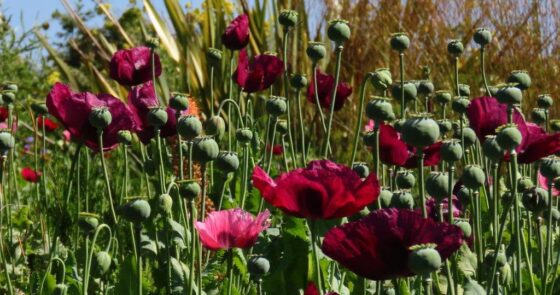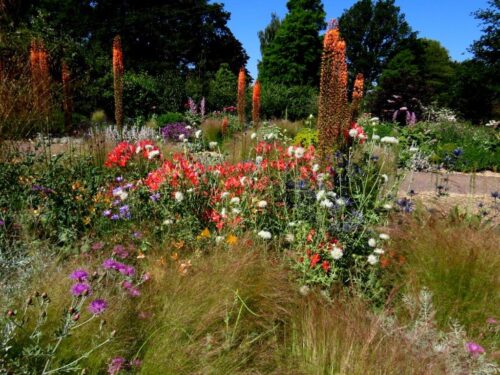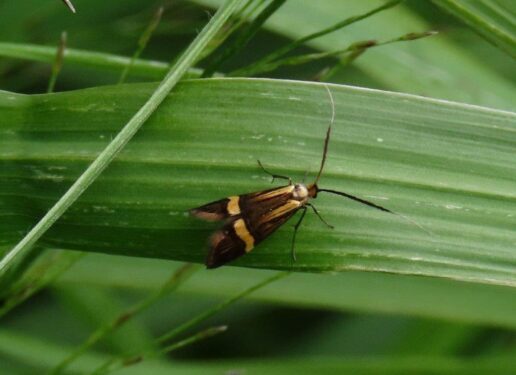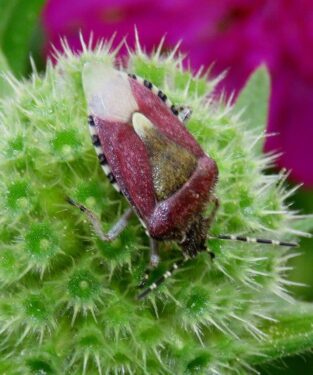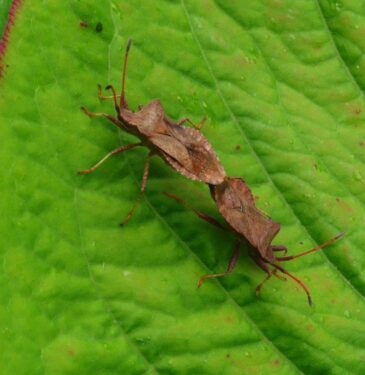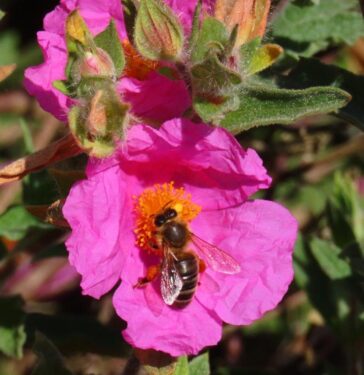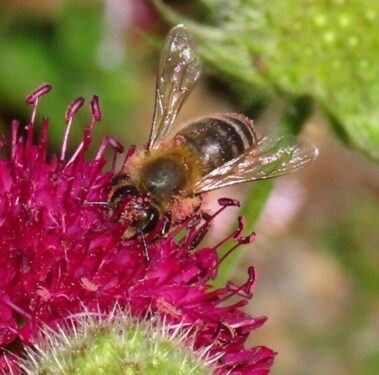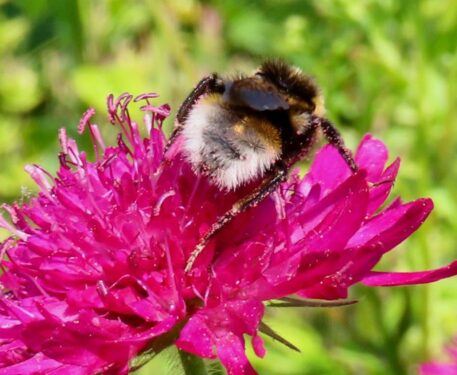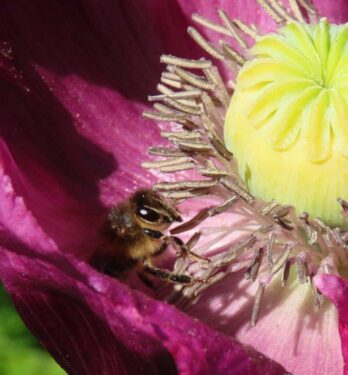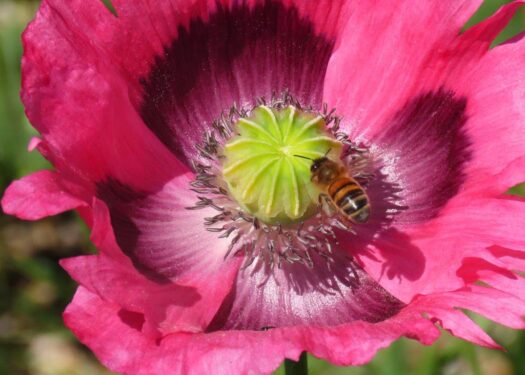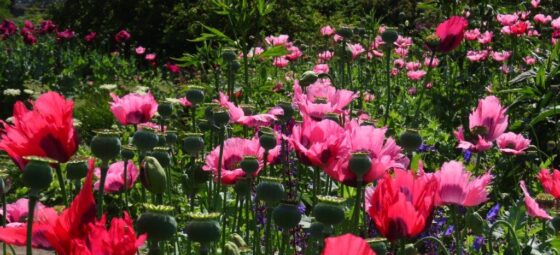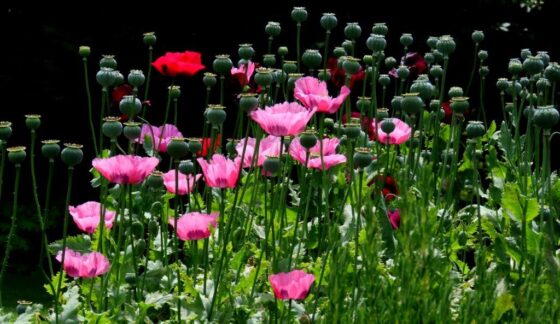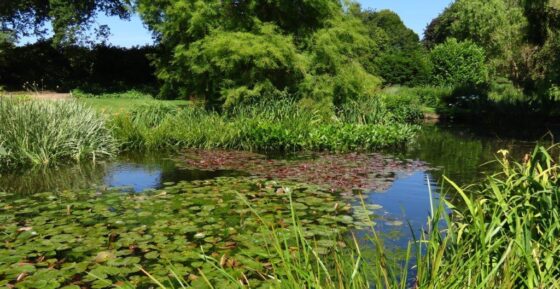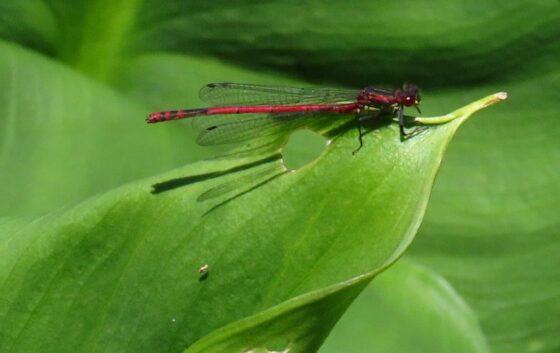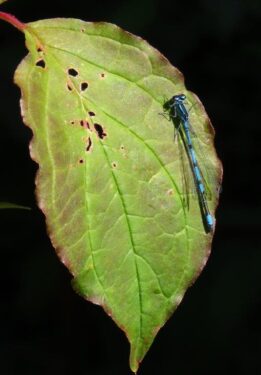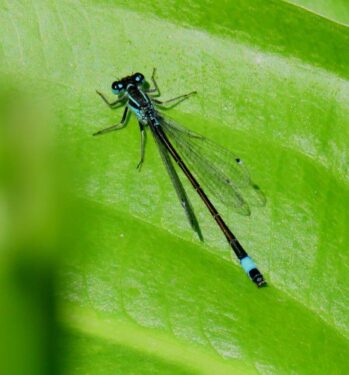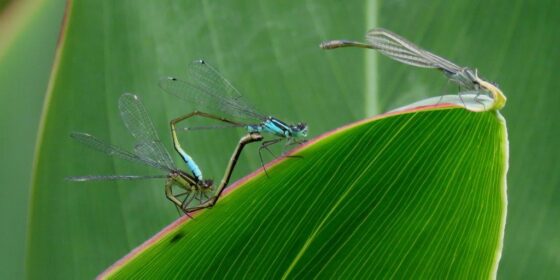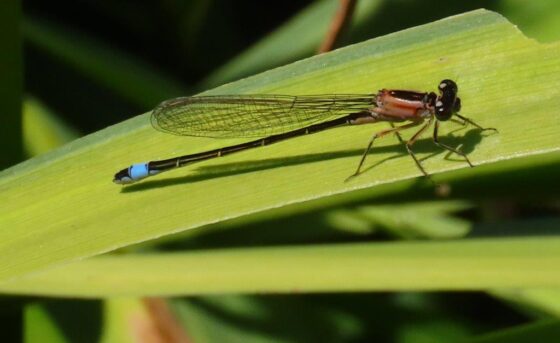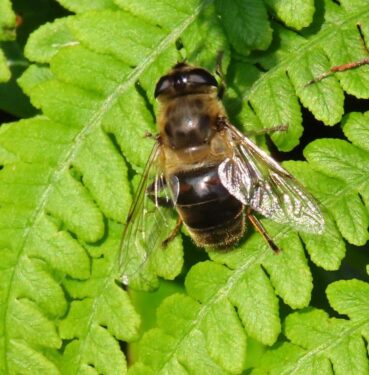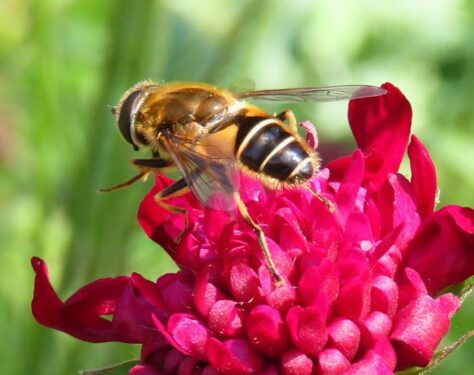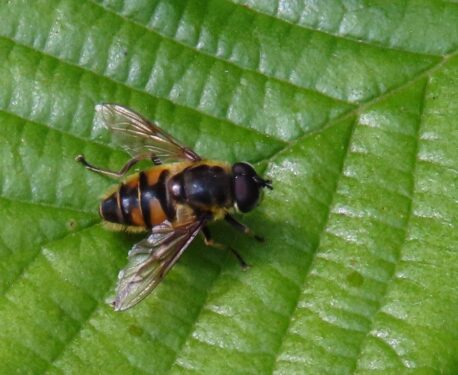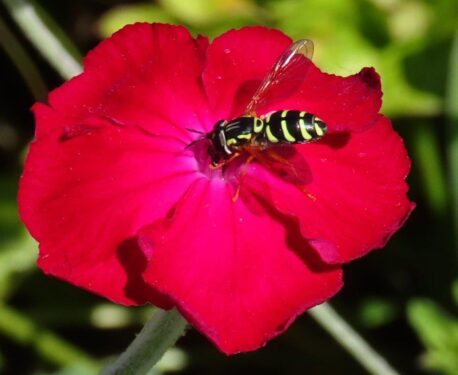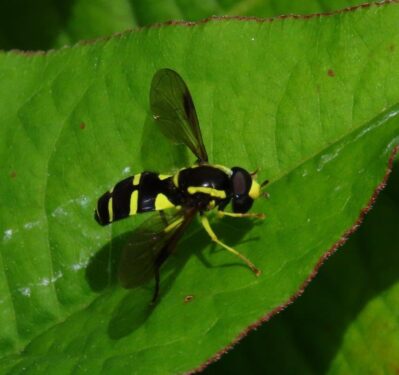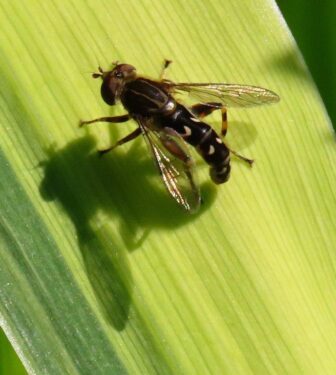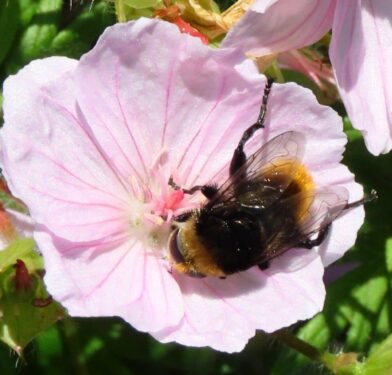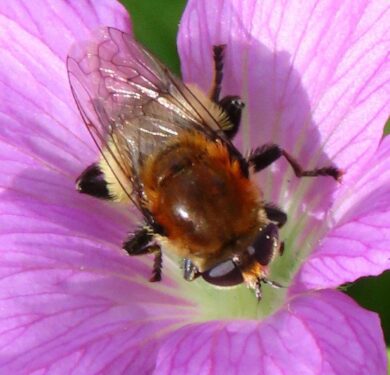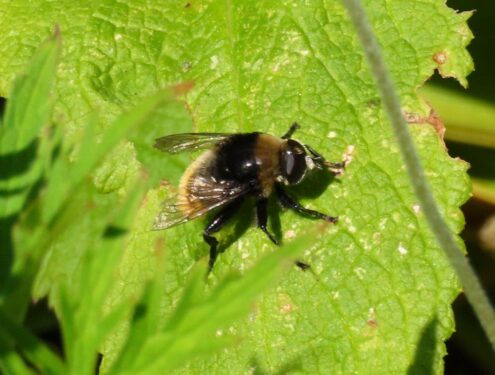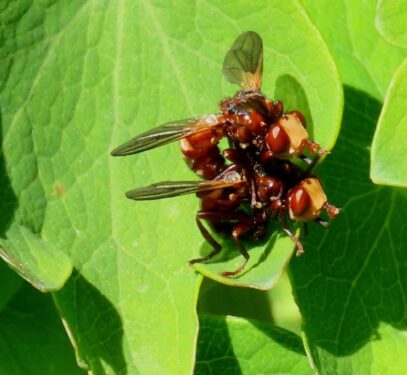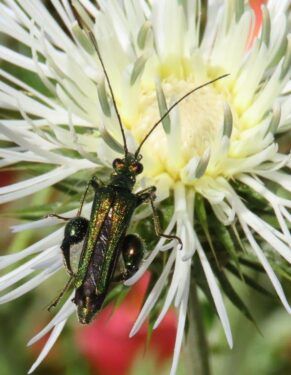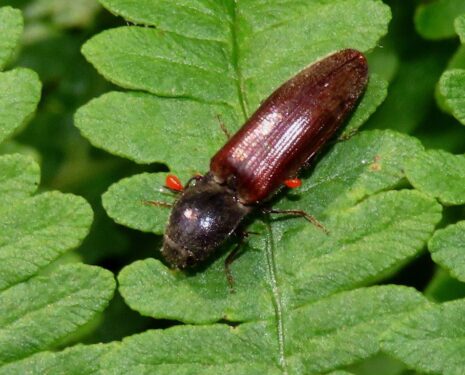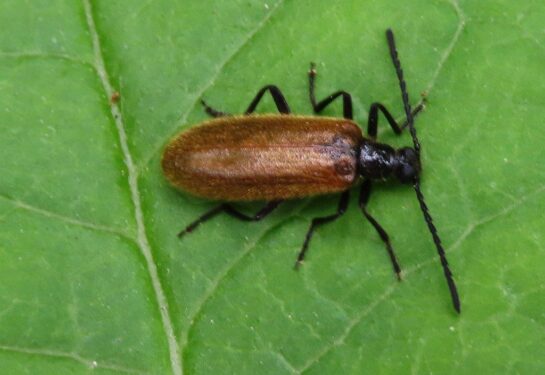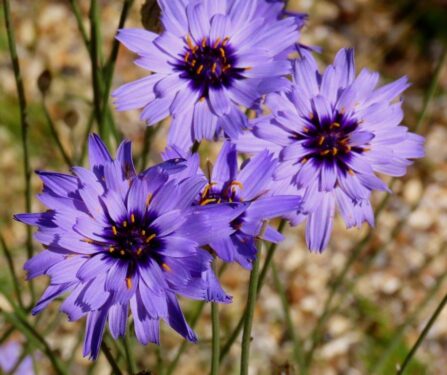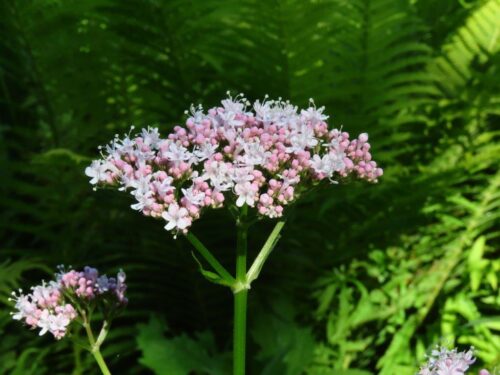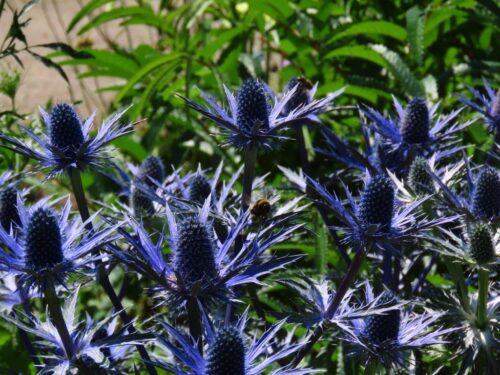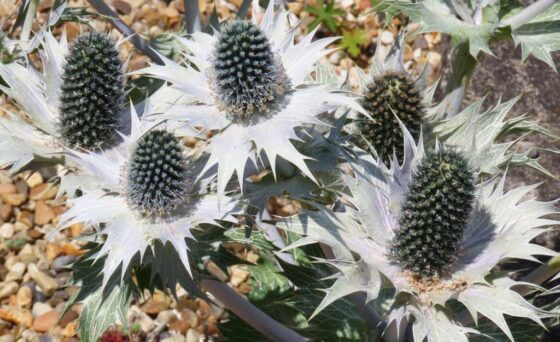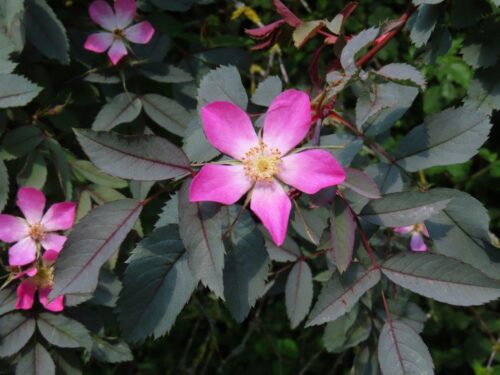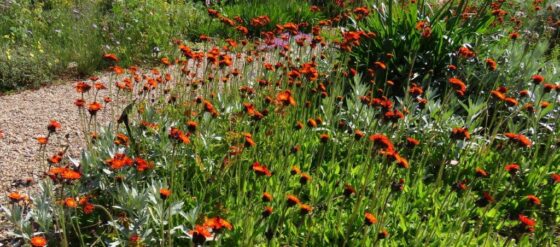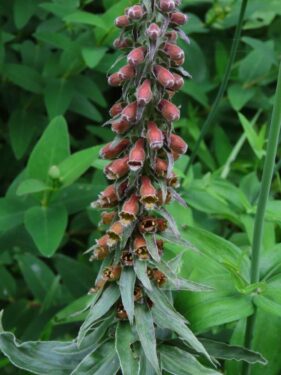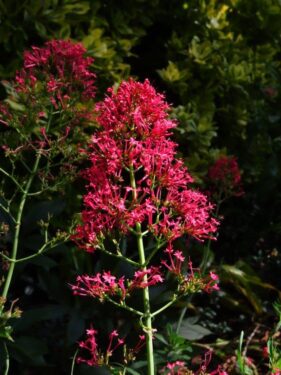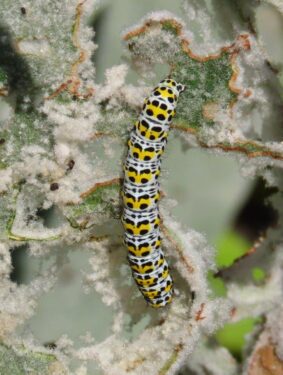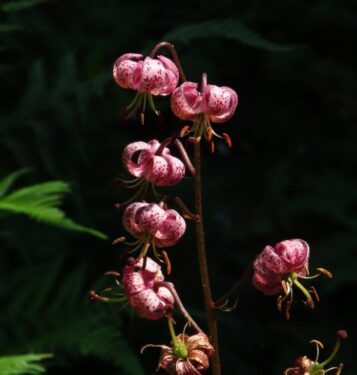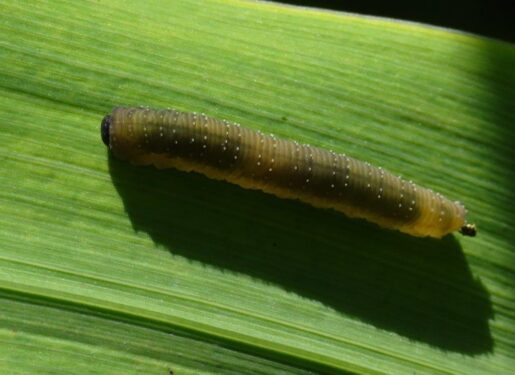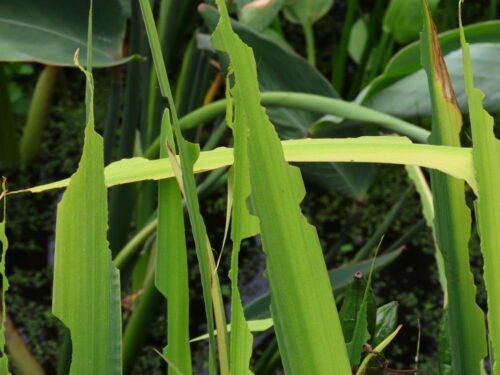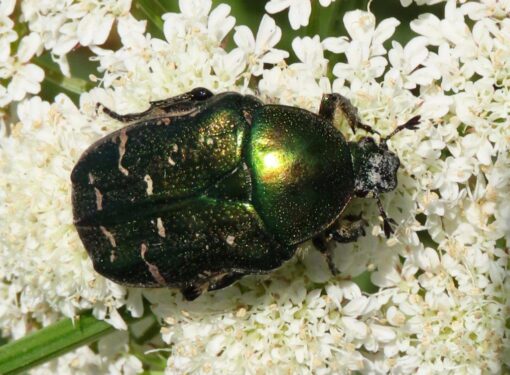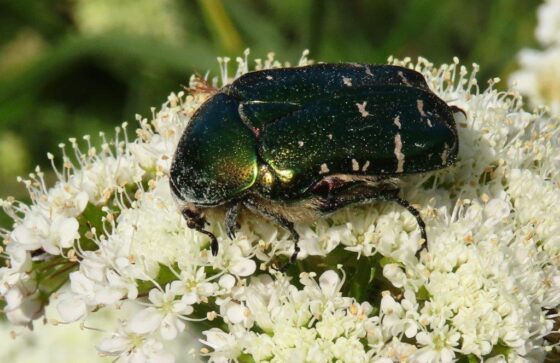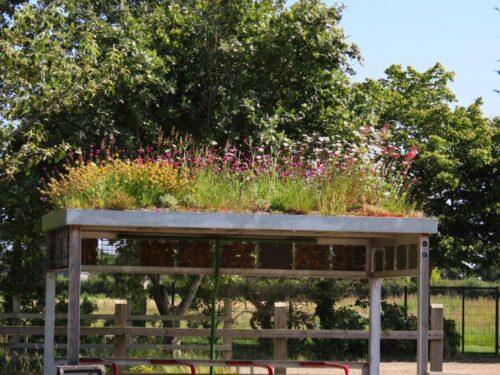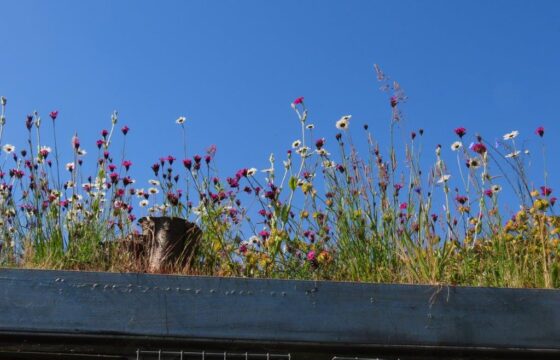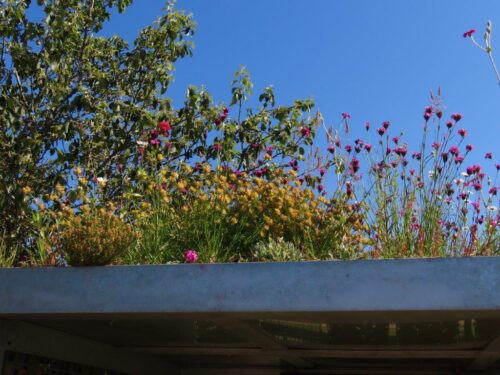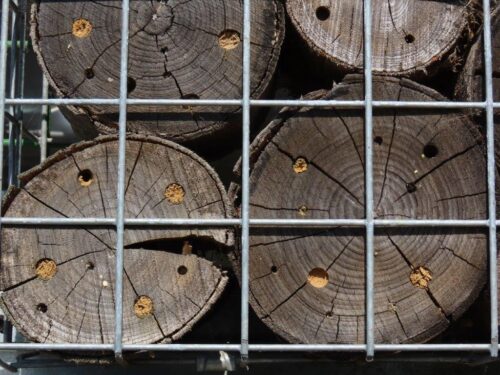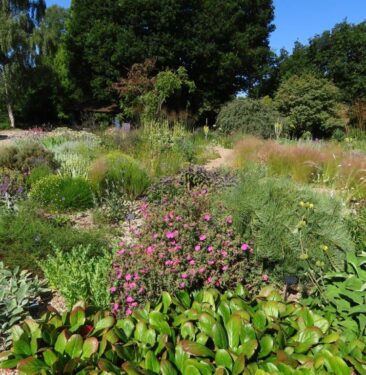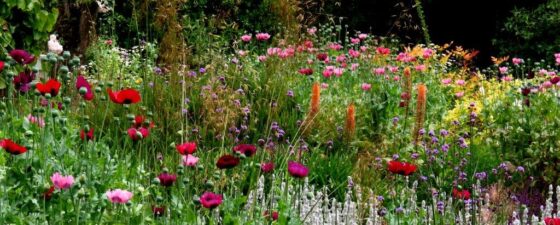In response to the question posed in the title, the answer is ‘it blooming well should be!’ as my latest Wandering Naturalist walks in the gardens were on the summer solstice. And what a day to be there! Azure skies, almost windless, hot sunshine almost for the first time this year. The fourteen visitors who joined me were treated to a lush garden, reflecting the spring rains, but sadly few high summer insects: the lack of warm sun thus far has delayed the emergence of many. Hopefully another few days of this will sweep away fears of a Silent Summer.
Butterflies were notable by their near absence, though that is not atypical of the ‘June Gap’: just five species with no more than ten individual of all species put together. Holly Blues amounted to four of those. Day-flying moths were similarly sparse, with just one Gold-barred Longhorn and a couple of Mint Moths. And remarkably just a single dragonfly (a newly-emerged Common Darter), while shield bugs and their relatives were represented only by two Hairy Shield-bugs and a few Dock Bugs, mostly doing what comes naturally!
Honeybee and bumblebee numbers were moderately high, especially visiting Cistus, Knautia/Scabiosa and Veronicastrum, together with Opium Poppies which this year are providing such a spectacle in the Reservoir Garden:
Especially by the ponds, but spreading round the whole garden, damselflies were everywhere: four species, mainly Azure (with my first Common Blue of the summer), plus Large Red and Blue-tailed, including several examples of the very attractive rufescens form.
Although there has not yet been the summer influx of hoverflies from the Continent, numbers are growing, both of the Drone-flies, Batman Hoverflies and others we have been seeing all spring …
… plus a few others including Chrysotoxum festivum, Xanthogramma pedissequum and Anasimyia contracta, the latter a fly of water margins and very scarce in north Essex.
Another remarkable hoverfly was the Narcissus Bulb-fly Merodon equestris, one that occurs in several colour forms, each of which are mimics of different bumblebee species.
Other flies included a mating pair of Gargoyle Flies, at least that’s what we call them, we think for very good reason!
A final selection of today’s insects includes Thick-thighed Beetle, a click-beetle with a couple of passenger mites, the hairy beetle Lagria hirta, and a few tiny nymphal Speckled Bush-crickets.
There are no doubt lots more to come, and the good news for them is that that there are absolutely masses of nectar and pollen resources awaiting their emergence or arrival.
Having given the gloom and doom messages, I should point out that compared with everywhere else in north Essex I have ventured recently, Beth Chatto Gardens are clearly richer in insect life, a bioabundance driven by the provision of nectar and pollen sources from all round the world and not compromised by the application of pesticides and herbicides.
By way of showing all visitors our ‘live and let live’ organic credentials, there were caterpillars munching unmolested. Our mulliens are covered in holes made by Mullein Moth caterpillars and irises sculpted by Iris Sawfly larvae, while the Martagon Lilies that have had their leaves stripped by Lily Beetles are still flowering happily.
Star turn though among the insects for both walks was a bronzed green, metallic Rose Chafer that remained munching the Corky-fruited Water-dropwort flowers all day. The Colchester area is one of the heartlands nationally for this magnificent beast, and we are so lucky to share our garden with it.
One final highlight was the living roof on the bike-shed, designed and installed by our friend John Little. Never has it looked better, and the solitary bees are making full use of the nesting holes created for them as part of the structure.
If anyone wants to join me on a nature walk around the gardens, I will be doing just that (weather permitting!) on July 19, August 2, August 16 and September 20. Once you have paid to come in, the walk is free! Walks commence at 11AM and 12 noon each day, meeting at the Visitor Information Centre. For garden entrance tickets and more information, visit our website Beth Chatto’s Plants and Gardens, and do come expecting to want to buy some of the wildlife-attracting plants I will show you, as well as delicious tea and cakes!
Blogs of the previous Meet the Wandering Naturalist event this summer can be found here:
April: The Wild Side of Beth Chatto Gardens: among the April showers… | Chris Gibson Wildlife
May: The Wild Side of Beth Chatto Gardens: the height of Spring | Chris Gibson Wildlife
